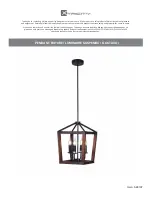
20
5.6
The blast pattern
Abrasive leaving the blast wheel blades is not thrown in all directions.
Scatter is restricted to an angle of about 50°. This is achieved through the
use of a control cage which surrounds the impeller. The position of the
window in the control cage determines the blast pattern.
Correct adjustment of the control cage and thus of the blast pattern is the
most important factor for optimum working with the blast cleaning machine.
Incorrect adjustment of the control cage results in very high wear and
premature blasting-through of the liners in the blast wheel housing, as well
as reduced blasting performance, uneven cleaning and a possible loss of the
rebounce energy of the abrasive.
The following 5 factors affect the blast pattern:
The turning direction of the blast wheel must correspond to the instructions on the housing
(arrow indicating the turning direction).
With increased wear of the tune-up kit (impeller, control cage) the blast pattern will change.
The size of the abrasive affects the blast pattern. With every exchange of abrasive, the blast pattern
must be re-adjusted.
The correct adjustment of the control cage is the most important factor to obtain an optimum blast
pattern. Each control cage has a lateral window. The position of the window determines where the
abrasive is fed onto the blast wheel blades and where it hits the surface to be treated.
Different types and hardness of surfaces.
5.7
Adjusting the blast pattern
a)
Move the blast head of the blast machine onto a 5-8 mm thick steel
plate and blast for 45 seconds at full amperage without moving the
machine from the spot.
b)
Move the machine from the blast zone and carefully inspect the steel
plate.
c)
You will find the hot spot on the blasted surface where the machine
has developed the highest blast cleaning intensity. This spot is
normally somewhat lighter than the rest of the blast cleaned area
due to the large amount of heat that is generated.
d)
If the ‘hotspot’
is too much on the right, turn the control cage a
little bit clockwise. Remove the feed spout (5) and loosen the
cage clamps (3+4) for cage adjusting, the control cage has cast
grooves (1+2) which indicate the opening/window of the cage.
If the ‘hotspot’
is too much on the left, turn the cage a little bit
counter-clockwise.
After adjustment, tighten the cage clamps (3+4) and place the
feed spout (5) back.
e)
Now the blasting procedure can be started. When a concrete surface
is to be blasted, check the blast pattern again after some meters
and re-adjust slightly if necessary.















































